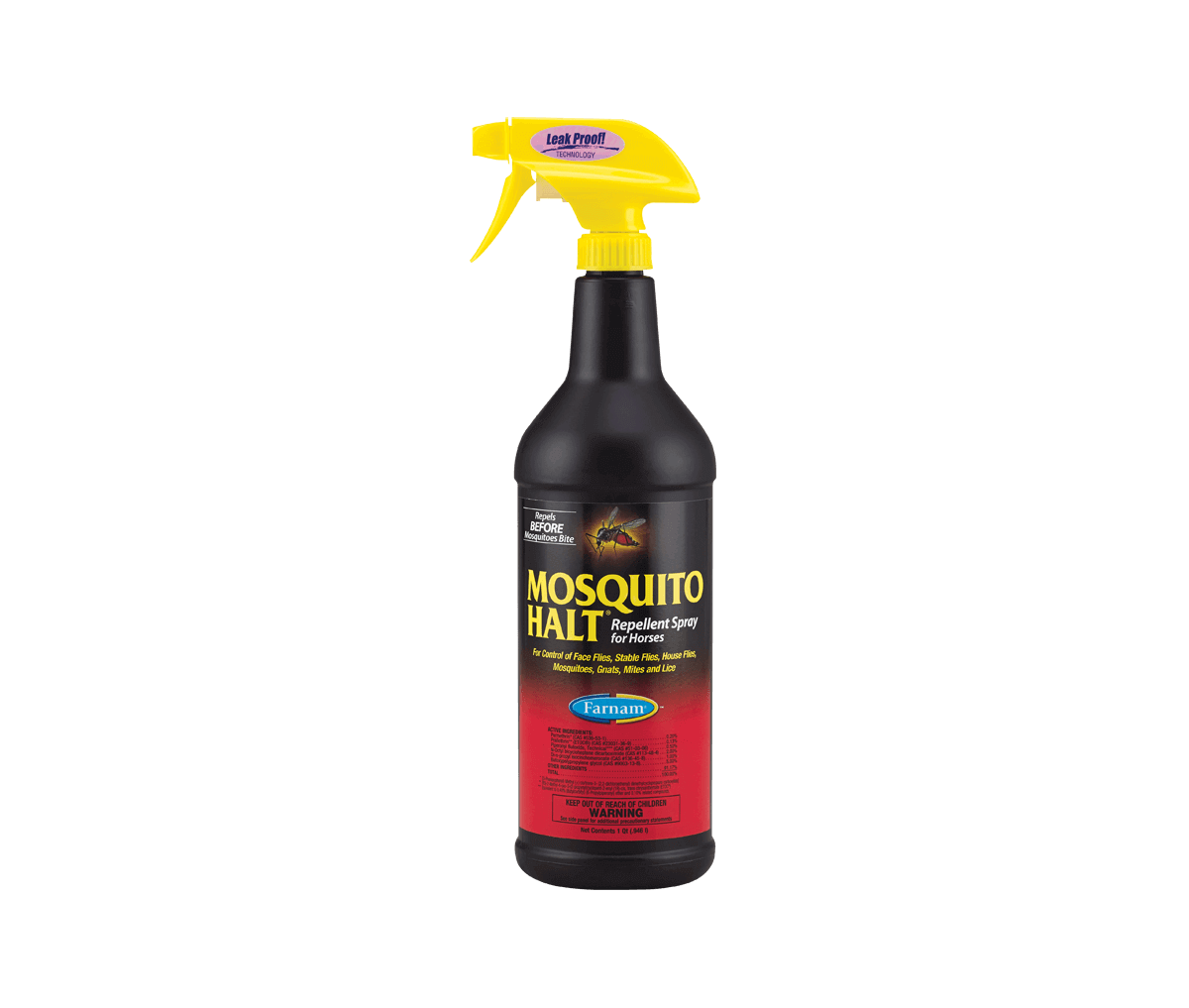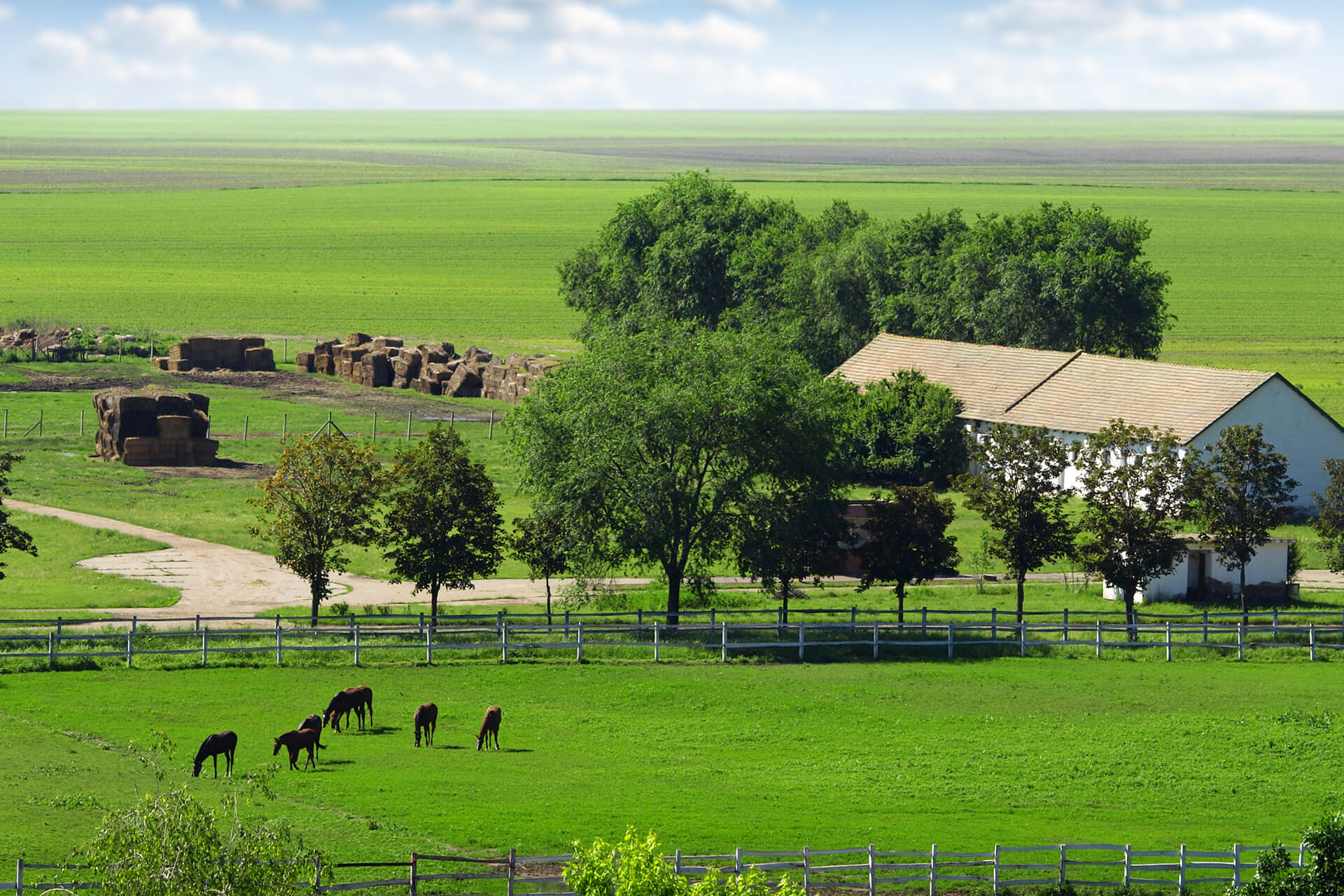West Nile Virus in Horses: Symptoms, Treatment and Prevention

Originating in Africa, West Nile Virus (WNV) is a mosquito-borne disease, which was first identified in the United States in 1999. Since then, more than 25,000 cases of WNV in horses have been reported in this country.
To date, the disease has been reported throughout the continental U.S., most Canadian provinces, Mexico, and several Central and South American countries.
How WNV is Transmitted
Wild birds are considered "hosts" of WNV, as they circulate high levels of the virus in their blood, which can then be picked up by mosquitoes as they feed on those birds. Mosquitoes who have fed on an infected bird can then transmit the virus by biting a horse.
Although humans can also contract the disease if bitten by a mosquito that has fed on an infected bird, horse-to-human and horse-to-horse transmission aren't possible.
Fortunately, horses can be protected against WNV through annual vaccination.
Take steps to limit your horse's exposure during mosquito season:
- Apply Farnam Mosquito Halt to repel mosquitos before they bite
- Avoid turn-out during peak mosquito activity (generally dawn and dusk)
- Use fans in the barn and stalls to make it harder for mosquitoes (which are weak flyers) to land on horses
- Empty and clean water troughs every three to four days to help prevent development of mosquito larvae
- Remove vegetation, piles of brush, weeds and leaves as mosquitoes hang out in these damp places during the heat of the day
- Keep gutters cleaned out
Patterns of Activity
Because mosquitoes are to blame for transmitting WNV, the disease is most prevalent when the mosquito population is highest, with infection rates in birds and mosquitoes peaking around August and into the fall.
While you might think a mosquito-borne disease like WNV would be greatest in hot, humid areas, it's not that simple to predict which parts of the country will have the most cases.
"Interestingly, we see small areas of intense WNV activity all over the U.S. every summer and these are often not in hot climates with year-round mosquito activity," notes Martha Mallicote, DVM, clinical assistant professor at the University of Florida College of Veterinary Medicine in Gainesville, Florida.
"Every year the amount and location of WNV cases varies," adds Mallicote. "That is likely more based on weather and local patterns of infected vectors than overall reflection of the use of vaccine."
Signs of WNV
The incubation period for WNV in horses is relatively short. An unvaccinated horse bitten by an infected mosquito may display signs of the disease after only five to 15 days. Because WNV can cause inflammation of the brain or inflammation of the lining of the brain and spinal cord, clinical signs tend to be neurologic.
A horse infected with WNV may show one or a combination of the following clinical signs:
- stumbling/falling
- lack of coordination
- limb weakness
- partial paralysis
- muscle twitching
- drooping lower lip
- inability/difficulty swallowing
- acting "colicky"
Contact your veterinarian immediately if you notice any of these signs, as prompt treatment is crucial.
Treatment
A blood test can confirm if the horse has WNV.
"Diagnosis is done with a blood test called an IgM capture ELISA. This antibody rises quickly following exposure to the virus, but also falls again fairly rapidly after exposure. This test doesn’t typically increase just due to vaccination," explains Mallicote.
To establish prognosis, the veterinarian should also conduct a thorough neurologic examination.
Because there is no cure for WNV, treatment is primarily directed towards managing inflammation and clinical signs. Since horses cannot be "carriers" or transmit the disease, quarantine is not part of treatment for horses with WNV.
"The amount of supportive care necessary depends on the severity of the horse’s neurologic signs. At the very least, we would give anti-inflammatory medications and ensure the horse is eating/drinking adequately to maintain themselves," says Mallicote.
"For horses that cannot eat or drink on their own, we would provide intravenous fluids and nutrient supplementation," she notes. "For horses that are so severely affected that they cannot stand, we would either attempt to support them with a sling (if that was safe, given their other neurologic signs), or provide care to keep them as healthy as possible when down on the ground."
Unfortunately, horses that are recumbent (unable to stand) have a poor prognosis due to the side effects of recumbency, whether caused by WNV or another condition.
According to the American Association of Equine Practitioners (AAEP), the mortality rate for horses with WNV is approximately 33%.
This is lower than two other serious mosquito-borne diseases, Eastern Equine Encephalomyelitis (EEE) with a mortality rate of 75 to 95%, and Western Equine Encephalomyelitis (WEE), which kills 20 to 50% of affected horses. But the fact remains that WNV can require extensive veterinary treatment and even horses who survive may suffer long-lasting neurologic deficits, such as abnormalities in gait and/or behavior.
Protecting Your Horse
Overall wellness and a regular vaccination program are key to protecting your horse from WNV and other insect-borne diseases. Keeping your horse healthy includes balanced nutrition desgined for his age, size and use, proper exercise, hoof care, deworming, and dental care.
"Ensuring that animals stay healthy in general and receive good preventative care, including routine veterinary exams, will help in preventing and identifying any issues that may make an individual horse more susceptible to disease," says Mallicote.
In the U.S.,WNV is considered one of the "core" vaccines, meaning all horses should be vaccinated for it annually. Core vaccines include:
- Eastern/Western Equine Encephalomyelitis
- Rabies
- Tetanus
- West Nile Virus
Depending on your location and individual horse, your veterinarian may also recommend additional vaccines. Talk with your veterinarian to plan a strategic vaccination program, which you must maintain every year to ensure your horse is protected when mosquito season arrives.
"When the WNV vaccine was first released, it was not clear that a single annual booster would provide one full year of protection, so it was recommended to boost more often," notes Mallicote. "At this point, there is enough data to support annual boosters being adequate for coverage even in areas with year-round mosquito populations."
The WNV vaccines currently available require two initial doses three to six weeks apart in order to offer full protection. If you have a foal or young horse, your veterinarian can tell you the best timing for vaccination to start.
But what if you're buying a new horse or aren't sure of a horse’s vaccine history?
"We have seen cases of WNV and EEE in horses that were newly purchased with poor or inadequate vaccine histories, which is just heartbreaking for their new owners," says Mallicote. "If you are unsure of a new horse’s vaccine history, he should be immediately given a primary series (two doses) of vaccine for ALL encephalitis viruses after being purchased, as well as ensuring he is vaccinated for the other core diseases.
"If the horse lives in a very cold, mosquito-free environment and it's mid-winter, those primary vaccines may be delayed for a short time. But the easy answer is to just go ahead and vaccinate," she emphasizes. "I’ve seen too many fatal cases of all types of viral encephalitis to not take the need for vaccination seriously."
Mosquito Control is Essential
In addition to annual vaccination, mosquito control is an extremely important part of protecting your horse from WNV.
Female mosquitoes are the ones that bite as they need a blood meal in order for eggs to develop. Those mosquitoes then lay their eggs in or around water, which makes standing water and damp areas prime breeding ground.
"The smallest container of water can be a breeding ground in the right climate and environment," warns Mallicote. "People always talk about tires and buckets, but don’t forget about outdoor plants with saucers under the pots, and shallow containers found around the barnyard."
Life with Horses Newsletter
Sign up now to stay connected with free helpful horse care tips, product updates, and special offers.
Featured Products
Related Articles
Feed-Through Fly Control: A Practical Tool in the Fight Against Flies
A feed-through horse fly control product such as Farnam's SimpliFly is a great first step when it comes to fighting flies. This unique product breaks the fly life cycle by stopping them before they even start! Read on to learn why and how you should add a feed-through product to your fly control program.






